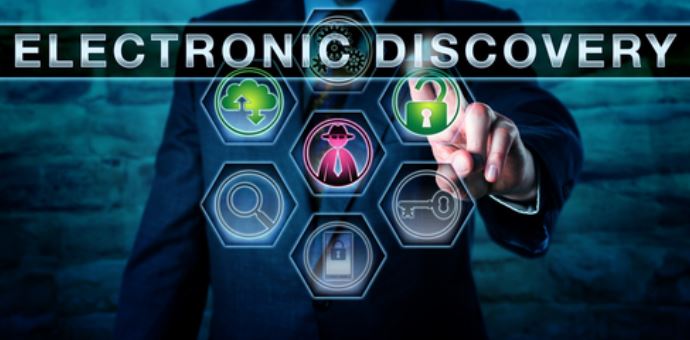More and more often we hear the terms “E-Discovery and Data Tools” but what does this really mean? In the ever expanding world of online and digital work it means our electronic data is growing exponentially! The number of platforms, cloud providers, SAAS (Software applications as a Service) and systems one person can access and use in a day is exponential! Even away from work the average person is using cell phones, tablets, social media platforms and other smart devices. As well as our data (personal and work) stored in the cloud, on our computers, on a server, on a portable drive, is quite frankly insane these days.
Remember when people paid for email service- LOL! and we had dial up????? (okay I am dating myself- quick pull out a fax machine and a shredder!)
But the point is that all of these systems, platforms etc. create security risks and access points, and they have a data trail or ‘signature’. When it comes to litigation matters, legal holds, investigations (HR, labor disputes etc.). These varying data file sources can make it very difficult to be organized when directed to issue a legal hold in connection with a litigation or other investigative matter. Because of these issues many legal professionals are turning to E-discovery tools to help find relevant or “hot” documents leading to uncovering “truths” in employment and other labor matters.
E-Discovery is the process of identifying, collecting, reviewing, analyzing, and producing electronic data, stored in various forms (ESI). The most common E-discovery tools used in the legal industry are found inside existing data bases in the form of the “audit trail”. The information from audit trails, among others are then uploaded into E-discovery systems. These systems are capable of handling large volumes of data. E-discovery databases allow the user to load data sets in a uniform manner and provide access to those documents, which can come from varying programs, in varying formats and a script is often run to assist in processing the data and doing key word searches, all within a central database. The systems can process MS Word, Adobe, emails, text messages, IM’s from instant messaging systems, and other types of data. The system will keep all documents in one, central location in an organized fashion and provide reports on the various key word searches. From there, the reviewers, can narrow down the documents and label them appropriately in connection with the litigation or investigation matter.
Here is a high level overview at some of the most used features in E-discovery:
- Processing- this occurs when data is initially loaded into a database. Processing allows the files to be categorized by the user in a way that meets the user’s current E-Discovery objectives without altering the actual data in its original form.
- Indexing and Optical Character Recognition (OCR)- this feature is a core principal in E-Discovery platforms. Occurs when the initial data is processed; eventually allows the user to run keyword searches on the entire data set (as it is loaded) and review results.
- De-duplication- removes duplicate files so the reviewer doesn’t need to worry about seeing the same items repeatedly (think emails and all the same ppl on them with their individual reply-all chains).
- Data Filtering- allows the reviewer to apply a date range filter to the results query. Can occur before or after processing of documents.
- Tagging- this one is super important (think investigation involving 2500 emails) once data is filtered, allows the reviewer to “TAG” a relevant document that is found to be relevant, responsive, confidential, work product, hot, or other issue.
- Batching documents- multiple reviewers accessing the database allows the documents to be separated so that the individual user’s tags do not overlap one another (essentially flags the items per reviewer).
- Exporting data- end users can choose how to export files from the database; ie: word doc, excel, adobe, email, etc.
When working with E-discovery providers users ensure they receive high levels of support, competitive pricing, and that robust functionality is available. A key item for employers and team members to remember “everything you do can be tracked”. Even if you work for a smaller company, in connection with a labor dispute or internal investigation, everything that is electronic is traceable- similar to a thumb print. Everything has meta data that can be searched, reviewed and uncovered in many cases. Social media is in the public domain and can be pulled into the investigative overview.
Over the past several years the technological advances with E-Discovery has been exponential. Increases in analytics have been key in moving these systems forward. Technology Assisted Review (TAR) is also at the cutting edge of development and has recently been approved by the courts.
Though we often think our personal items are private, they are not. Employees and employers need to be cognizant of electronic media, applications, etc. in both personal and professional lives.
